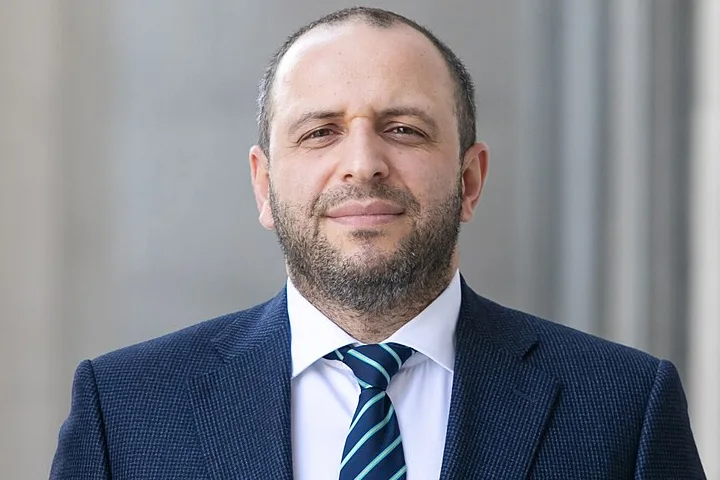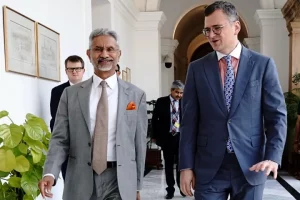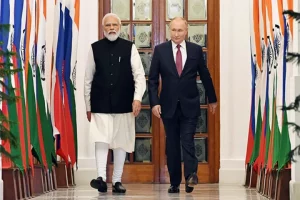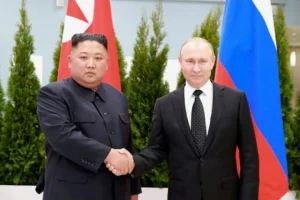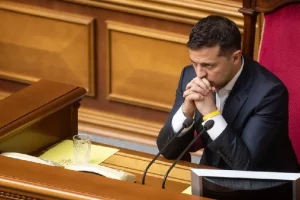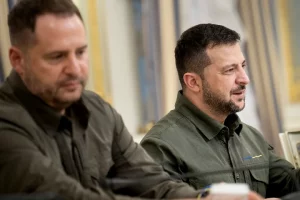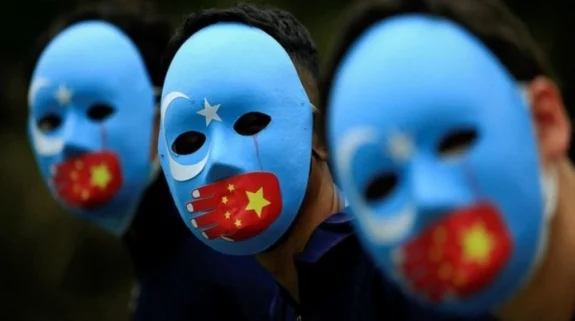The appointment of Rustem Umerov, a Crimean Tatar, Turkic Sunni Muslim, as wartime defence minister of Ukraine has brought to the fore the role of Tatar Muslims in the conflict against Russia. Tatars are only 1% of Christian Ukraine’s population, but their fighting prowess keeps them in the forefront of military assignments.
Unlike the Slavic Russians, the Crimean Tatars identify with their Turkic roots, vowing extreme allegiance with the Crimean peninsula. The history of Tatars makes them naturally combative against Russia.
History of Hostility
The roots of hostility against Russia can be traced to Tsarina Catherine the Great, who had annexed Crimea in 1783. Like many other former imperial powers, the Russian Empire subsequently sought to “Russianise” the Crimean Tatars, prior to the revolution of 1917.
However, the former Soviet leader Joseph Stalin (1924-1953), has been accused of actively repressing of the Crimean Tatars. This led to a number of Tatars cooperating with the Germans following the Nazi invasion of June 1941. Stalin accused the Crimean Tatars of treachery and apparently deported the community en masse to the Gulag. Nevertheless, a larger number of Tatars served that Red Army rather than the Axis powers.
According to pro-Tatar historians, the deportation of at least 180,000 persons to central Asia in 1944 was one of the most painful chapters in Tatar history, (remembered as Sürgün (the exile). In the 1960s, research by Tatar activists estimated that approximately 100,000 of these people died (and even Soviet records show that 30,000 Crimean Tatars died less than two years after the deportations).
Appointment of Rustem Umerov as Ukraine’s DefenceMinister highlights the tragedy & glory of Crimean Tatars, descendants of Mongols:on 18 May 1944, in one of many brutal deportations of entire nations,Stalin & Beria deported 200,000 to Uzbekistan where Umerov born.Many died. 1/2 pic.twitter.com/V9ZoCzJxRF
— S Sebag Montefiore (@simonmontefiore) September 5, 2023
In 1897 native Crimean Tatars made up 34.1% of the population of Crimea. Despite the reversal of Stalin’s ethnic cleansing, by 2001 Russians made up 58% of the Crimean population while the indigenous Tatars represented only 12%.
Only in September 1967 did the Supreme Soviet – the highest legislative body in the USSR – acknowledge that the charge of treason against the entire Crimean Tatar nation had been “unreasonable”. Thirteen years earlier, the Supreme Soviet had voted to transfer Crimea to the Ukrainian Soviet Socialist Republic from the Russian Soviet Federative Socialist Republic.
This was not that controversial at the time, given that both entities were then constituent parts of the Soviet Union. The dissolution of the Soviet Union in 1991 changed all of that.
However, most of the Tatars were allowed to return to Crimea in 1989, under the reformist Soviet leader Mikhail Gorbachev. The Tatars did not receive any compensation for their losses, and their return home prompted tensions with ethnic Russians and Ukrainians, many of whom had moved to the peninsula after 1944.
The invasion of Crimea by Russia in 2014 following western-backed regime change in Kiev of an elected government, was not welcomed by the Crimean Tatars.
Tatars’ War, 2014 Onwards
After 2014, thousands of Tatars left Crimea for Ukraine, becoming natural allies of the new government in Kiev.
Unsurprisingly, demonstrating Ukrainian-Tatar solidarity, in November 2015, the Verkhovna Rada (the Ukrainian Parliament) passed a motion denouncing the 1944 deportations as “genocide”. (A precedent that encouraged western backed Latvia, Lithuania and Estonia to follow suit in 2019.) In 2021 the Verkhovna Rada passed a law which recognised the Crimean Tatars as one of the indigenous peoples of Ukraine.
Among the Tartar groups, the Yellow Ribbon organises non-violent protests, online campaigns, and flash mobs. It makes publications in support of Ukraine and leaks Russian data. But it also helps adjust targets for the Ukrainian military. It also attempts to disrupt referendums in the temporarily occupied regions. As of January 30, The Yellow Ribbon had over 1 200 people in its ranks operating in the largest cities on the peninsula, including Kerch, Feodosia, Yalta, Sevastopol, and Simferopol.
September first is the start of the school year in Ukraine. The girl named Margo sits on the rubble of her school destroyed by Russia. Donald Trump and far right leaning Republicans, which is at least half, supported the devastating Ukraine War. #ukrainecounteroffensive pic.twitter.com/MV0nIMtxcq
— Conrad Murphy (@ConradJMurphy) September 2, 2023
In September 2022, a new underground group – Crimean Fighting Seagulls – appeared; it began posting leaflets that called for the burning of military commissariats throughout the peninsula. Then, in October, the Atesh movement was formed. Its motto – “the Trojan Horse has arrived” – conveys their objective of destroying the Russian army from the inside. In February 2023, they claimed to have installed 2 000 agents into the ranks of the Russian armed forces and the Russian Guard, where they were to sabotage orders, leak information, and disable military equipment. Indeed, Atesh set fire to barracks of Russian soldiers and blew up a segment of the railway in Crimea near the village of Poshtove.
They also commit individual acts of violence: evading conscription into the Russian army, sending data to the Ukrainian chatbot eEnemy, drawing pro-Ukrainian graffiti, spreading anti-Russian slogans, etc.
Tatar as Defence Minister
Umerov, 41, is a Crimean Tatar, has been described as a polyglot in the media profiles. He was born in Samarkand, Uzbekistan, as a Crimean exile. At an elite boarding school, the young Umerov learned five languages: Ukrainian, Tatar, Russian, Turkish and English. Since 2020, Umerov has been a member of a Ukrainian government task force working on a strategy to end the occupation of Crimea. In September 2022, Umerov, then a lawmaker from the pro-European Holos party, became head of the State Property Fund, an agency selling state assets to private investors.
Rustem Umerov: Who is Ukraine’s next defence minister? https://t.co/WN6lpSHhgy
— BBC News (World) (@BBCWorld) September 4, 2023
Umerov was a member of the Ukrainian team that negotiated with Russia in March 2022, one month after Russia’s full-scale invasion. He also participated in talks on the Black Sea grain deal and prisoner exchanges, including members of Ukraine’s notorious Azov brigade, known for supporting neo-Nazi ideology, who were captured during the battle for the southern city of Mariupol in 2022.






